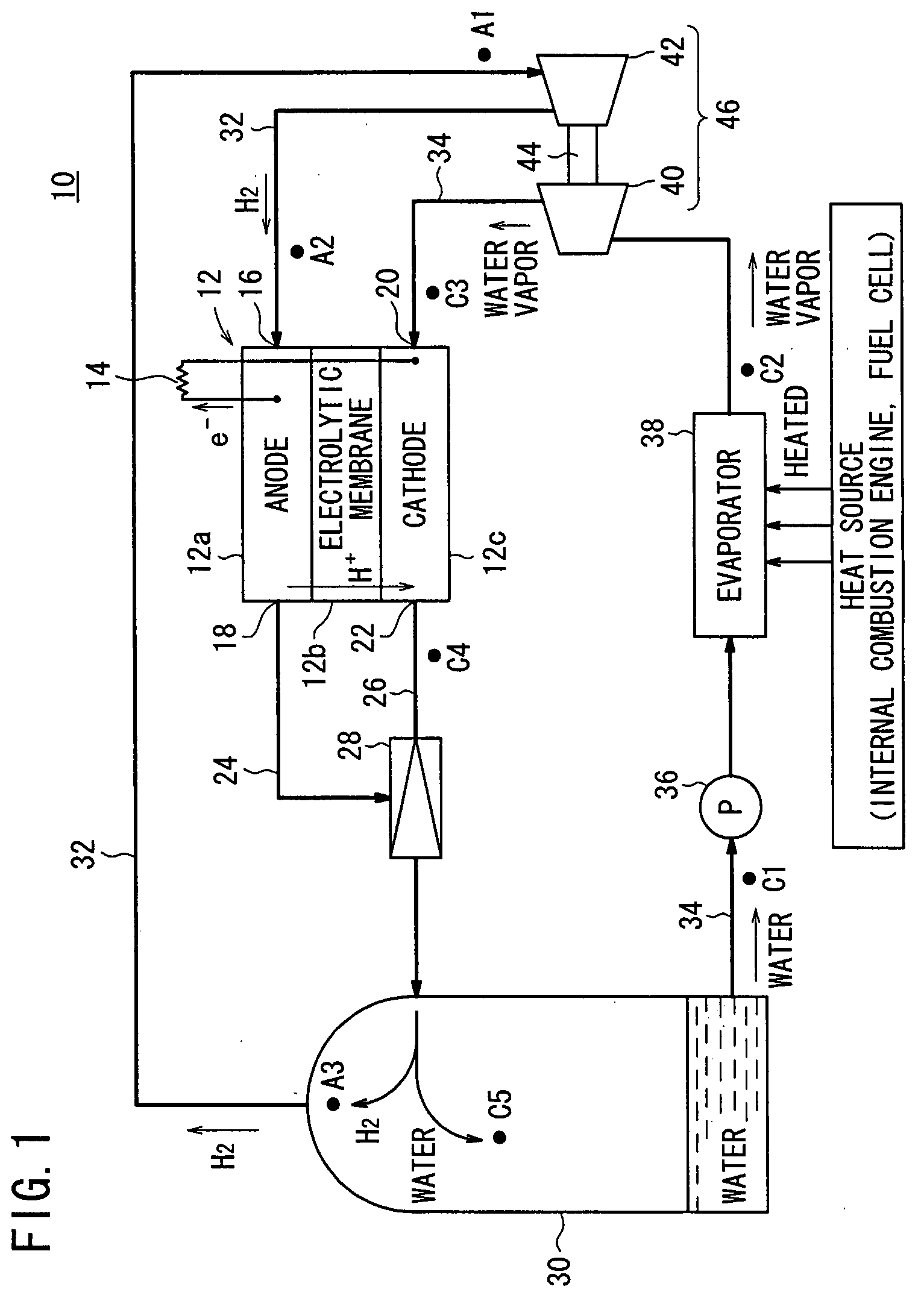Thermoelectric conversion apparatus
a technology of conversion apparatus and thermal energy, which is applied in the direction of lighting and heating apparatus, electrochemical generators, cell components, etc., can solve the problems of low performance level of thermoelectric devices, large loss, and low performance level of materials, and achieve the effect of highly efficient conversion of thermal energy into electric energy
- Summary
- Abstract
- Description
- Claims
- Application Information
AI Technical Summary
Benefits of technology
Problems solved by technology
Method used
Image
Examples
first embodiment
[0020]FIG. 1 schematically shows a thermoelectric conversion apparatus 10 according to the present invention.
[0021]As shown in FIG. 1, the thermoelectric conversion apparatus 10, which is in the form of a closed-cycle system, evaporates a working medium of water into a water vapor with a heat source of waste heat discharged from an internal combustion engine, a fuel cell, or the like (not shown), and supplies the water vapor and a hydrogen gas sealed as a reactive gas in the system to an electric generator 12 to form a concentration cell for electric power generation. The reactive gas may be an oxygen gas or the like rather than a hydrogen gas, and the working medium may be alcohol, ammonia, or the like rather than water.
[0022]The electric generator 12 is of a cell structure comprising an anode electrode 12a, a cathode electrode 12c, and an electrolytic membrane 12b sandwiched between the anode electrode 12a and the cathode electrode 12c. The electric generator 12 is of essentially ...
second embodiment
[0052]A thermoelectric conversion apparatus according to the present invention will be described below with reference to FIG. 2. FIG. 2 schematically shows the thermoelectric conversion apparatus, generally denoted by 100. Those parts of the thermoelectric conversion apparatus 100 which are identical to those shown in FIG. 1 are denoted by identical reference characters, and will not be described in detail below.
[0053]The thermoelectric conversion apparatus 100 according to the second embodiment differs from the thermoelectric conversion apparatus 10 according to the first embodiment in that it is free of the hydrogen supercharger 46 and the ejector 28 is connected to the anode supply passage 32, rather than the cathode discharge passage 26.
[0054]In the thermoelectric conversion apparatus 100, when the working medium of water is evaporated into a water vapor by the evaporator 38, the water vapor is directly supplied from the evaporator 38 to the electric generator 12, not via any ex...
PUM
 Login to View More
Login to View More Abstract
Description
Claims
Application Information
 Login to View More
Login to View More - R&D
- Intellectual Property
- Life Sciences
- Materials
- Tech Scout
- Unparalleled Data Quality
- Higher Quality Content
- 60% Fewer Hallucinations
Browse by: Latest US Patents, China's latest patents, Technical Efficacy Thesaurus, Application Domain, Technology Topic, Popular Technical Reports.
© 2025 PatSnap. All rights reserved.Legal|Privacy policy|Modern Slavery Act Transparency Statement|Sitemap|About US| Contact US: help@patsnap.com



